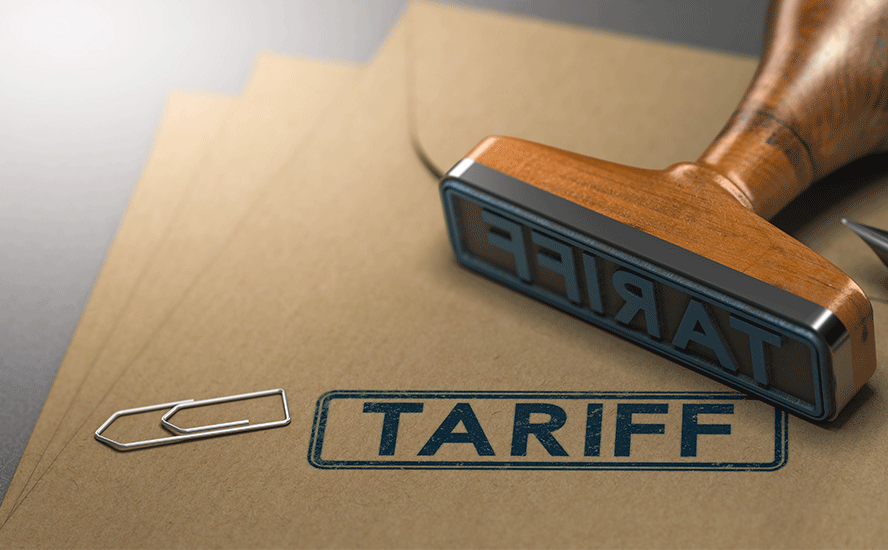Merchants of Death & Destruction – Richard Mills
2024.06.07
When Israel bombed a refugee camp in Gaza on the premise that Hamas leaders were hiding there, US-made munitions were found among the wreckage.
At least 45 people were killed and more than 200 injured after a fire broke out following the Israeli military’s strike on the camp in Rafah, southern Gaza on May 26.
Footage obtained by CNN showed swathes of the camp in Rafah in flames, with scores of men, women and children frantically trying to find cover from the nighttime assault. Burned bodies, including those of children, could be seen being pulled by rescuers from the wreckage.
According to an Israeli Defense Forces (IDF) statement, via CNN, the attack was conducted based on prior intelligence indicating that senior Hamas officials were present at the site. The IDF had assessed there would be “no expected harm to uninvolved civilians.”
Prime Minister Netanyahu later called the bombing “a tragic error”.
CNN said four weapons experts identified the tail of a US-made GBU-39 small diameter bomb (SDB), manufactured by Boeing. Yes, that Boeing. The media outlet quoted one explosive weapons expert, Chris Cobb-Smith, who said the GBU-39 is a high-precision munition “designed to attack strategically important point targets” and result in low collateral damage. However, Cobb-Smith, a former British Army artillery officer, said “using any munition, even of this size, will always incur risks in a densely populated area.”
“An inertial measurement unit from the missile, used to aid with precision targeting, was manufactured by Honeywell, an American conglomerate that specialises in the design and delivery of sensors and guidance devices that are used in a variety of military weapons.” Al Jazeera
An IDF spokesman told reporters the strike used two small warheads containing 17 kilograms of explosives, adding that the bombs were “the smallest munitions that our jets could use.”
The article goes on to say that more than 36,000 people have been killed in Gaza since Israel launched its military operation there — a response to Hamas’s killing of 1,200 Israelis and the taking of 250 hostages on Oct. 7, 2023.
US military aid to Israel
According to the Stockholm International Peace Research Institute (SIPRI), the United States has long been the biggest supplier of arms to Israel. In April, President Biden signed a foreign aid bill that included $26 billion for the Israel-Hamas conflict. ($15B in military aid, $2.4B for regional US military operations, and $9B in humanitarian assistance.)
In 2016, the U.S. and Israeli governments signed a third 10-year Memorandum of Understanding, covering the period from Oct. 1, 2018 to Sept. 30, 2028. The MOU provides a total of $38 billion in military aid over the 10 years, $33 billion in grants to buy military equipment and $5 billion for missile defense systems…
Israel is the first international operator of the F-35 Joint Strike Fighter, considered the most technologically advanced fighter jet ever made. Israel is in the processes of buying 75 F-35s and – as of last year – had taken delivery of 36, paying for them with U.S. assistance.
The United States has also helped Israel develop and arm its Iron Dome short-range rocket defense system, developed after the 2006 war between Israel and Lebanon-based Hezbollah. The United States has repeatedly sent Israel hundreds of millions of dollars to help replenish its interceptor missiles.
Washington has also helped fund the development of Israel’s “David’s Sling” system, designed to shoot down rockets fired from 100 kilometers to 200 km (62 miles to 124 miles) away. (Reuters, April 8, 2024)
How much U.S. aid does Israel receive?
The companies listed here have provided Israel with weapons and other military equipment used in its attacks on Gaza, the West Bank, Lebanon, and Syria since October 2023.
Of course it isn’t just the war in Gaza.
As part of the $95 billion spending bill that was stalled in Congress for months, but finally passed in April, about $61 billion is going to Ukraine and replenishing US weapons stockpiles. The amount provided to Ukraine for the purpose of weapons is reportedly $13.8B.
About $8 billion [is] for helping US allies in the Indo-Pacific region and countering China. More than $3.3 billion would go toward submarine infrastructure and development, with an additional $1.9 billion to replenish U.S. weapons provided to Taiwanand other regional allies. (APN News, April 23, 2024)
Arguably, the US and its leaders have never met a war they didn’t like. That’s because in America, the war machine, also known as the military industrial complex, is big, powerful, and politically connected.
How good is the MIC for business and keeping politicians in office?
Military spending in the US is close to reaching $1 trillion per year. That’s the equivalent amount spent annually on interest to service the $34 trillion national debt.
In this article, we take a deep dive into the military industrial complex.
Guns vs butter
The guns versus butter model portrays the relationship between a nation’s investment in defense and civilian goods. Because a country has finite resources, it must choose how much to spend on defense/ the military (guns), against the amount budgeted for items that are needed for non-defensive purposes (butter). Of course, it can also buy a combination of both, and most countries do.
The one nation that doesn’t have to bother with this calculus, is the United States. Because the US holds the reserve currency, and all the exorbitant privilege that implies, it can spend on guns AND butter.
Fact is, whenever the US government runs short on funds, it simply prints more money. Or borrows it, by issuing Treasury bills that are sopped up by domestic and foreign investors. The demand for Treasuries will always be resilient, so long as the US dollar remains the reserve currency.
This is also the reason why the United States is consistently allowed to be fiscally irresponsible, every year spending far more than it earns.
Interest on the debt
Servicing the debt is one of the federal government’s biggest expenses. According to Visual Capitalist’s research, the cost of paying for America’s $34 trillion national debt crossed the $1 trillion mark in 2023. No doubt higher interest rates contributed to this grim milestone.

On average, the US spends more than $2 billion per day on interest. Over the next decade, the government is expected to spend $12.4 trillion on interest payments, averaging about $37,100 per American.
There’s also the budget deficit to consider.
According to the Congressional Budget Office, the budget deficit, referring to how much spending exceeds revenues, was $1.7 trillion for fiscal 2023. That is 23% higher, or $320 billion more, than 2022’s deficit. As a percentage of GDP, the 2023 deficit was 6.2% of GDP, the highest deficit-to-GDP ratio in US history, outside of major wars or recessions.
Public debt currently sits at $27.1 trillion. Public debt is expected to exceed the annual economic output of the entire country in 2025 (i.e. 100% of GDP). It will pass the World War Two record-high 106% of GDP by 2028, hit 116% in 2034, and reach 172% by 2054, according to CBO projections shown in Fig. 1.

Over the next decade, the CBO says excessive spending will drive expenditures from $6.5 trillion in 2024 to $10 trillion in 2034, a 54% increase. Revenues will only grow by 51% during the same period. Figure 2 shows projected outlays are significantly higher than the 50‐year historical average.

Military spending
According to USAFacts, the United States as top military power in 2023 spent 13.3% of its budget on defense and has nearly 1.3 million active-duty troops. The US spends more on defense than the next nine countries combined.
According to World Population Review, the 10 countries with the highest military expenditures (2022 figures) are:
United States ($811.6 billion)
China $298 billion
India ($81 billion)
Saudi Arabia ($57.5 billion
Russia ($73 billion)
United Kingdom ($70 billion)
Germany ($57.8 billion)
France ($57 billion)
Japan ($53.9 billion)
South Korea ($49.6 billion)
Global military spending has surged amid war, rising tensions and insecurity. SIPRI found total military expenditures in 2023 reached $2.443 trillion, a 6.8% increase since 2022, and the steepest year-on-year increase since 2009.
While the United States is the world’s biggest military force, as the table below shows, Vietnam, India and South Korea have the largest armies. China has the largest standing army with over 2 million active personnel. However when reservists are counted, the country lags behind Vietnam, India, South Korea, and Russia. (Visual Capitalist, June 1, 2024)
With increasing defense spending over the last decades, China ranks third in the number of tanks and second in the number of aircraft carriers in service. The country is second to the US military in absolute terms, accounting for 13% of world military expenditures versus the United States’ nearly 40% in 2022.


As the graphic below shows, the amount the United States spends on defense ($805 billion in 2023) is less than non-defense discretionary spending of $917 billion. Total outlays last year were $6.1 trillion. Of mandatory spending, the lion’s share was Social Security at $1.3 trillion, followed by Medicare, Medicaid and income security programs.

According to USAFacts, for the 2024 defense budget ($842B requested),
Out of the five major Armed Forces managed by the DoD, the Air Force gets the most direct funding at $216.1 billion, followed by the Navy ($202.6 billion), Army ($165.6 billion), Marine Corps ($53.2 billion), and Space Force ($30.1 billion).
The remaining DoD funds are allocated to the National Guard ($32.9 billion), along with focused programs like the Special Operations Command (US SOCOM), the Missile Defense Agency, and the Defense Health Program.
The Department of Defense has requested nearly $850 billion for fiscal year 2025. This represents about 3% of national income and almost half of all federal discretionary budget outlays. (Econofact, May 14, 2024)

What’s not counted
But this number is misleading. It grossly underestimates how much public money is actually plowed into the US military, through different departments.
Let’s look at what 2024’s $842 billion doesn’t include. The DOD budget does not count black ops, interest on the defense portion of the debt, and ongoing military obligations to veterans.
The DOD budget also doesn’t include the cost of overseas wars. That money is allocated to Overseas Contingency Operations. A report from the Costs of War project at Brown University revealed that since 9/11, wars have cost the US and estimated $8 trillion. None of this shows up under Department of Defense expenditures.

The budget for nuclear weapons is split between the Defense Department and the Department of Energy. According to the Congressional Budget Office (CBO), the DOD and the DOE have submitted plans for nuclear forces covering the period 2021-30. The $634 billion total averages out to just over $60 billion per year.
US nuclear forces consist of submarine-based ballistic missiles (SSBNs), land-based intercontinental ballistic missiles (ICBMs), long-range bomber aircraft, shorter-range tactical aircraft carrying bombs, and the nuclear warheads those delivery systems carry.
Almost two-thirds of the nuclear budget is within the DOD, with the largest costs being ballistic missile submarines and intercontinental ballistic missiles. The remaining third, paid for by the Department of Energy, is primarily for nuclear laboratories and supporting facilities.
US defense expenditures are usually counted as the second or third largest category of the federal budget behind Social Security and Medicare, but if we include all the items not normally tallied under defense spending, and departments in which much of their spending is devoted to the military effort, we find that defense spending exceeds Social Security ($1.3T) and interest on the debt ($1T).
(We don’t have a total, all-encompassing defense spending figure for 2023, but in 2022 we estimated it was $1.527T. With new commitments to Israel and Ukraine, it is likely higher.)
Interest on the debt on track to exceed military expenditures
According to the Congressional Budget Office, military spending is projected to increase by 10% by 2038, after adjusting for inflation.
The world’s arms dealer
The United States is by far the largest contributor to NATO, so between defending Europe from Russian aggression, maintaining a military umbrella over South Korea, Japan and Taiwan and “flying the flag’ exercises in the South China Sea I feel confident in saying that US annual military expenditures will be maintained, or more likely, increased.
Not only does the US have easily the most powerful military but the country is also the world’s biggest arms dealer.
The amount the US spends on its military and other related branches of government would be justifiable if it only made and sold arms for the purpose of defending itself and its allies.
But the United States indiscriminately sells weapons to whatever country will buy them, and few care, especially US politicians, if the weapons are used to kill that nation’s own people, instead of for defensive purposes.
The above-mentioned Brown University Costs of War project estimates 432,093 civilians have died as a direct result of US post-9/11 wars.

Brown University
According to SIPRI, via Statista, the United States is the world’s largest arms dealer, responsible for 41.7% of international arms sales between 2019 and 2023. Sales are up 38.6% compared to 2017-21. During the latest period, the country supplied arms to more than 100 countries.
Peace-loving Canadians are not exempt from this weapons-fest. The Globe and Mail reports that Canada in 2016 became the second-biggest arms exporter to the Middle East, behind number 1 the US. The rise from #6 to #2 came after the Trudeau government greenlighted a $15 billion sale of armored vehicles to Saudi Arabia, a country the Globe points out is regularly ranked among the “worst of the worst” on human rights.
Germany and Poland were the second and third biggest suppliers of arms during 2019-23. Other significant merchants of death include Russia, France, China and South Korea.
The Economist notes that Russia’s invasion of Ukraine has brought other countries into the arms trade, namely North Korea and Iran.
With few countries willing to sell arms to Russia, Iran has stepped into the breach, selling the Kremlin 2,400 of its Shahed “kamikaze”drones.
Russia’s defense minister recently visited Pyongyang. According to The Economist,
As well as drones and missiles such as the kn-23, which is almost a replica of the Russian Iskander ballistic missile, it could offer self-propelled howitzers and multi-launch rocket systems. According to sources in American intelligence, North Korea has been delivering 152mm shells and Katyusha-type rockets to Russia for the best part of a year. Russia is shopping in Pyongyang and Tehran because both regimes are already so heavily targeted by international sanctions that they have nothing to lose and much to gain by doing business with Mr Putin’s government. They are not so much an “axis of evil” as a marketplace of pariahs.
Meanwhile, US ally South Korea has stepped up arms shipments. SIPRI says the South Korean government wants to become the world’s fourth-largest arms exporter by 2027. Last year it sold $17 billion worth, with $14.5B coming from sales to Poland. The deal includes a thousand k2 Black Panther tanks, more than are operating within the armies of Britain, France, Germany and Italy combined. It also includes 672 k9 Thunder self-propelled howitzers; 288 k239 Chunmoo multiple-rocket launchers; and 48 Golden Eagle fa-50s, a cut-price fourth-generation fighter jet, The Economist states.
Turkey is another emerging arms exporter, with SIPRI estimating that between 2018 and 2022, its weapons exports increased 69% compared to the previous five-year period. The Economist says Pakistan is receiving modernized submarines from Turkey. Last July, the country signed a $3 billion agreement with Saudi Arabia to supply the Akinci unmanned combat aerial vehicle (UCAV).
The drone can reportedly carry air-to-air missiles and a cruise missile with a range of 250 km.
Over half of China’s arms sales between 2018 and 2022 went to just one country — Pakistan. They include combat aircraft, missiles, frigates and submarines.
Returning to the biggest arms exporter, the United States, SIPRI observes that America delivered major arms to 107 states in 2019-23, more than the next two biggest exporters combined. Unsurprisingly, during this period, the largest share of US arms exports, 38%, went to the Middle East. Saudi Arabia bought the most American-made weapons (15%), Qatar was second @ 8.2%, Kuwait third (4.5%) and Israel fourth (3.6%).
In a 2022 article, Forbes columnist William Hartung argues that the Biden administration has fallen short in its pledge to limit sales to regimes that repress their own people and wage unjust wars outside their borders.
He gives three examples: Saudi Arabia, the United Arab Emirates, and Egypt:
Saudi Arabia and the UAE were the key players in a coalition that intervened in Yemen seven years ago [in March 2022] with the goal of rolling back the gains of the Houthi opposition and their allies and enshrining a sympathetic government there. The war has been brutal. Coalition air strikes have targeted hospitals, civilian neighborhoods, weddings, a funeral, and even a school bus, and have caused at least 18,000 civilian casualties. Nearly 400,000 people have died in the conflict, and millions are on the brink of famine, in significant part due to a Saudi air and naval blockade that has prevented the import of desperately needed fuel and supplies. Yet the Biden administration has continued to arm the Saudi regime, and to supply critically important maintenance activities and spare parts that have enabled the slaughter in Yemen. This support has come despite President Biden’s description of Saudi Arabia as a pariah during his run for office, and his pledge to end support for “offensive operations in Yemen” along with “relevant arms sales.”
In another violation of the notion of centering human rights in arms sales policy – underscored in an essay by my colleague Hayden Schmidt — [in March 2022] the Biden administration announced the proposed sale of F-15 combat aircraft to the al-Sisi dictatorship in Egypt, one of the most repressive regimes in the world, and a government that has engaged in indiscriminate bombing in the Northern Sinai, including the use of cluster bombs. In discussing the deal and other U.S. arms sales to the region, Gen. Kenneth Frank McKenzie, the head of the U.S. Central Command, said that “with our weapons come our values.”
There is no evidence to suggest that this is the case, and plenty of counter-examples, including the recent mass execution of 81 people by the Saudi regime.
The war machine
That’s a lot of guns, not much butter, to return to the economic model mentioned at the top. Clearly the power brokers in the upper echelons of the US government have decided that the military industrial complex, a term first coined by President Eisenhower, should be supported in perpetuity. The reason is simple: there’s a lot more money in guns than butter.
Thousands of lobbyists work in Washington to ensure the levers of government are greased for their arms-dealing clients. Congressmen/ women and senators know that turning off the taps to government funding could result in tank, plane, radar, bullet, bomb and missile making factory closures in their state and defeats at the ballot box.
Check out SIPRI’s list of the world’s top 100 arms-producing and military service companies.

The first five are all American. They include, in descending order, Lockheed Martin, Raytheon Technologies, Northrop Grumman Corp, Boeing and General Dynamics. General Electric is also on the list. It wasn’t surprising to learn that 32% of iconic British carmaker Rolls Royce’s revenues are from arms. For Sweden’s Saab, it’s 89%.
In an article on the “new” military industrial complex, The Nation gives a few examples of how misguided American’s spending priorities have become:
- In 2020, Lockheed Martin received $75 billion in Pentagon contracts, more than the entire budget of the State Department and the Agency for International Development combined.
- 2023’s spending just for that company’s overpriced, underperforming F-35 combat aircraft equals the full budget of the Centers for Disease Control and Prevention. And as a new report from the National Priorities Project at the Institute for Policy Studies revealed recently, the average taxpayer spends $1,087 per year on weapons contractors compared to $270 for K-12 education and just $6 for renewable energy.
The degree to which the military industrial complex is enmeshed in Washington’s political culture is made apparent by a few more figures:
- The arms industry as a whole has donated more than $83 million to political candidates in the past two election cycles, with Lockheed Martin leading the pack with $9.1 million in contributions, followed by Raytheon at $8 million, and Northrop Grumman at $7.7 million. Those funds, you won’t be surprised to learn, are heavily concentrated among members of the House and Senate armed services committees and defense appropriations subcommittees.
- Lobbying expenditures by all the denizens of the MIC are even higher — more than $247 million in the last two election cycles. Such funds are used to employ 820 lobbyists, almost 2 for every member of Congress.
- Nearly 700 former high-ranking government officials, including former generals and admirals, now work for defense contractors. While a few of them are corporate board members or highly paid executives, 91 percent of them became Pentagon lobbyists, according to the report.
- And that feverishly spinning revolving door provides current members of Congress, their staff, and Pentagon personnel with a powerful incentive to play nice with those giant contractors while still in their government roles. After all, a lucrative lobbying career awaits once they leave government service.
Conclusion
Being the world’s cop, and its top military spender, comes at a very high cost, in money that could have been spent on bettering society, rather than on defending it against domestic terrorists, and funding far-away conflicts that most Americans have no stake in.
Global tensions are mounting. The wars in Ukraine and Gaza show no signs of ending. China is beefing up its military and so is India and Japan. To maintain its position as the world’s strongman, the United States will have to keep spending on equipment, technology and troops. The government continues to be pressured by its allies and the defense industry lobbyists in Washington to spend more.
How much longer before Joe and Suzy Americana tire of the endless wars, the constant threats, the prioritization of military over social spending?
When their anger boils over because they can’t afford to feed and clothe their kids, while the US controls 750 bases in at least 80 countries and spends more on their military than the next nine countries combined? More than Social Security? More than Medicare and Medicaid combined? And let’s not forget: being the world’s biggest arms dealer?

The hypocrisy inherent in protesting the killing of 30,000 Palestinians in Gaza is palpable, when you consider that millions more are killed elsewhere every year by a global war machine anchored in Washington.
A large part of our comfortable North American lifestyle is paid for by taxes on the profits from selling weapons.
Others complain about the interest on the debt, seemingly ignorant of the fact that the defense budget, when everything is included, now exceeds this amount.
But war is profitable, it also keeps politicians in power and dangles the prospect of a lobbyist’s job to cushion the retirement income from enabling the Merchants of Death while in office. So silence is rewarded.
Richard (Rick) Mills
aheadoftheherd.com
subscribe to my free newsletter
Legal Notice / Disclaimer
Ahead of the Herd newsletter, aheadoftheherd.com, hereafter known as AOTH.
Please read the entire Disclaimer carefully before you use this website or read the newsletter. If you do not agree to all the AOTH/Richard Mills Disclaimer, do not access/read this website/newsletter/article, or any of its pages. By reading/using this AOTH/Richard Mills website/newsletter/article, and whether you actually read this Disclaimer, you are deemed to have accepted it.
Any AOTH/Richard Mills document is not, and should not be, construed as an offer to sell or the solicitation of an offer to purchase or subscribe for any investment.
AOTH/Richard Mills has based this document on information obtained from sources he believes to be reliable, but which has not been independently verified.
AOTH/Richard Mills makes no guarantee, representation or warranty and accepts no responsibility or liability as to its accuracy or completeness.
Expressions of opinion are those of AOTH/Richard Mills only and are subject to change without notice.
AOTH/Richard Mills assumes no warranty, liability or guarantee for the current relevance, correctness or completeness of any information provided within this Report and will not be held liable for the consequence of reliance upon any opinion or statement contained herein or any omission.
Furthermore, AOTH/Richard Mills assumes no liability for any direct or indirect loss or damage for lost profit, which you may incur as a result of the use and existence of the information provided within this AOTH/Richard Mills Report.
You agree that by reading AOTH/Richard Mills articles, you are acting at your OWN RISK. In no event should AOTH/Richard Mills liable for any direct or indirect trading losses caused by any information contained in AOTH/Richard Mills articles. Information in AOTH/Richard Mills articles is not an offer to sell or a solicitation of an offer to buy any security. AOTH/Richard Mills is not suggesting the transacting of any financial instruments.
Our publications are not a recommendation to buy or sell a security – no information posted on this site is to be considered investment advice or a recommendation to do anything involving finance or money aside from performing your own due diligence and consulting with your personal registered broker/financial advisor.
AOTH/Richard Mills recommends that before investing in any securities, you consult with a professional financial planner or advisor, and that you should conduct a complete and independent investigation before investing in any security after prudent consideration of all pertinent risks. Ahead of the Herd is not a registered broker, dealer, analyst, or advisor. We hold no investment licenses and may not sell, offer to sell, or offer to buy any security.
Legal Notice / Disclaimer
Ahead of the Herd newsletter, aheadoftheherd.com, hereafter known as AOTH.Please read the entire Disclaimer carefully before you use this website or read the newsletter. If you do not agree to all the AOTH/Richard Mills Disclaimer, do not access/read this website/newsletter/article, or any of its pages. By reading/using this AOTH/Richard Mills website/newsletter/article, and whether you actually read this Disclaimer, you are deemed to have accepted it.



























